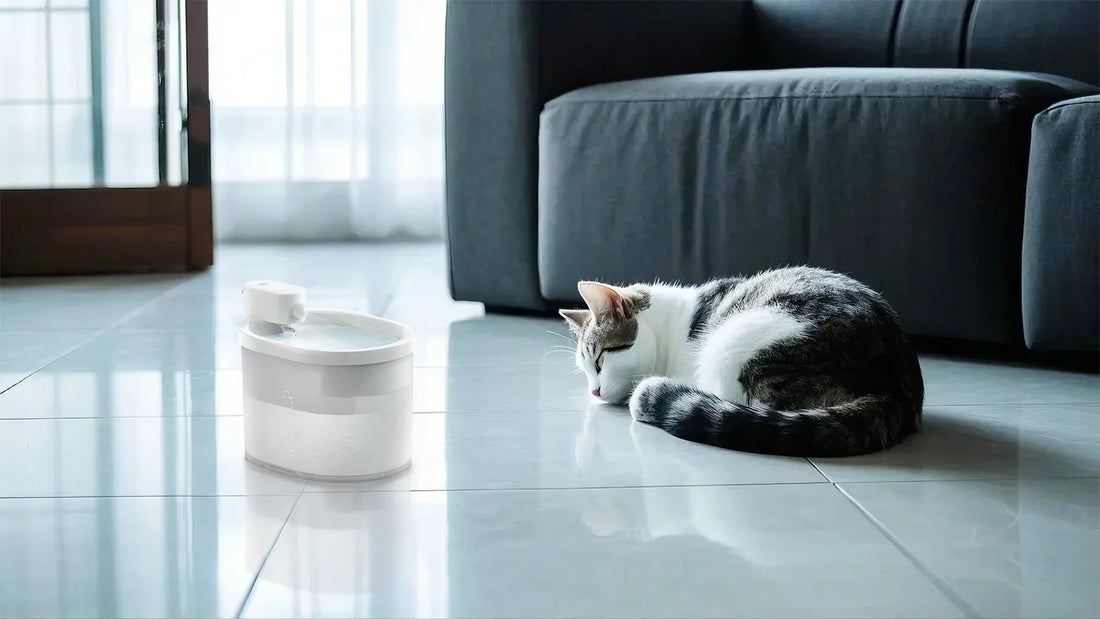If you've recently invested in a water fountain for your cat, only to find that they turn up their nose at it, you're not alone. Many cat owners face this puzzling behavior. Cats are known for their finicky nature, and their aversion to water fountains can stem from a variety of reasons. Understanding these reasons and finding solutions can help ensure your cat stays hydrated and healthy.
Why Cats Might Avoid Water Fountains
Cats are creatures of habit, and any change in their environment can be met with resistance. Here are some common reasons why your cat might not like a water fountain:
- Unfamiliarity: Cats are naturally cautious animals. A new water fountain might seem strange or intimidating to them, especially if they've been drinking from a bowl their entire life.
- Noise Sensitivity: Some water fountains produce a gentle humming or bubbling sound that might be unsettling for cats with sensitive hearing.
- Water Movement: The flowing water in a fountain can be perceived as unpredictable, which might make your cat feel uneasy.
- Material or Design: The material or design of the fountain might not appeal to your cat. For example, some cats prefer shallow bowls over deep fountains.
How to Encourage Your Cat to Use a Water Fountain
If your cat doesn't like the water fountain, there are several strategies you can try to make it more appealing:
- Gradual Introduction: Place the fountain near your cat's existing water bowl and let them explore it at their own pace. You can even add a few drops of water from their bowl to the fountain to make it smell familiar.
- Turn Off the Fountain: Initially, keep the fountain turned off to allow your cat to get used to its presence. Once they're comfortable, you can gradually introduce the flowing water.
- Experiment with Placement: Cats prefer quiet, low-traffic areas for their water sources. Try placing the fountain in a calm corner where your cat feels safe.
- Try Different Designs: If your cat continues to avoid the fountain, consider trying a different model with a simpler design or quieter operation.
The Importance of Hydration for Cats
Hydration is crucial for your cat's overall health. Cats are naturally prone to dehydration, especially if they primarily eat dry food. Proper hydration helps maintain kidney function, aids digestion, and supports overall well-being. Here are some additional tips to ensure your cat stays hydrated:
- Multiple Water Sources: Provide multiple water bowls or fountains around your home to encourage drinking.
- Wet Food: Incorporate wet food into your cat's diet, as it contains higher moisture content than dry food.
- Fresh Water: Ensure your cat always has access to fresh, clean water. Stale or dirty water can deter them from drinking.
Understanding Your Cat's Unique Preferences
Every cat is different, and what works for one might not work for another. Pay attention to your cat's behavior and preferences to determine the best hydration solution. If your cat continues to avoid the water fountain, don't be discouraged. There are plenty of other ways to ensure they stay hydrated, such as using a traditional water bowl or incorporating more wet food into their diet.
Remember, the goal is to make drinking water as comfortable and appealing as possible for your feline friend. With patience and experimentation, you'll find the perfect solution that keeps your cat happy and hydrated.
If you're still struggling to get your cat to use a water fountain, consider consulting with a veterinarian or a feline behaviorist. They can provide personalized advice based on your cat's specific needs and preferences. Ultimately, understanding and respecting your cat's unique quirks is the key to ensuring their health and happiness.













